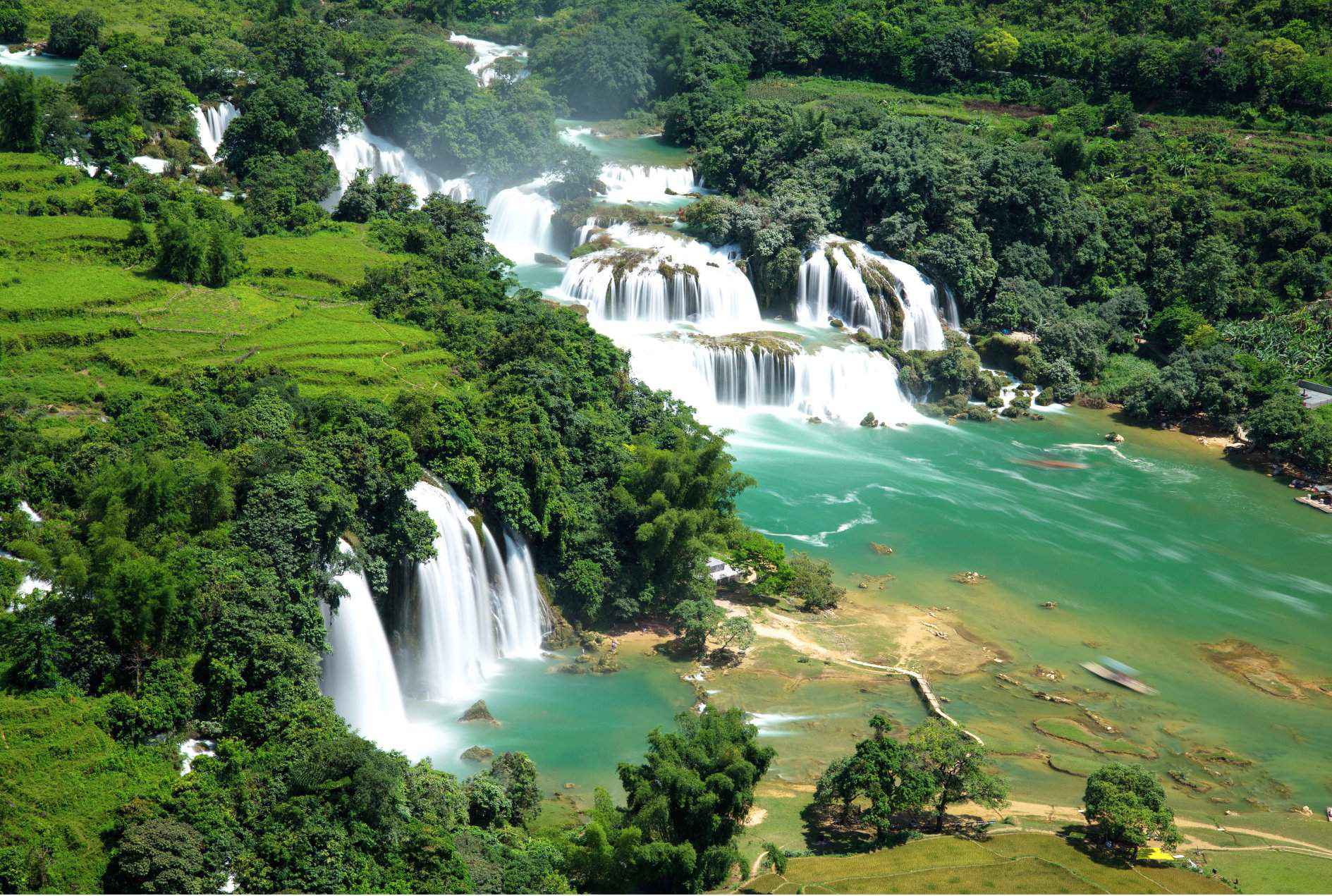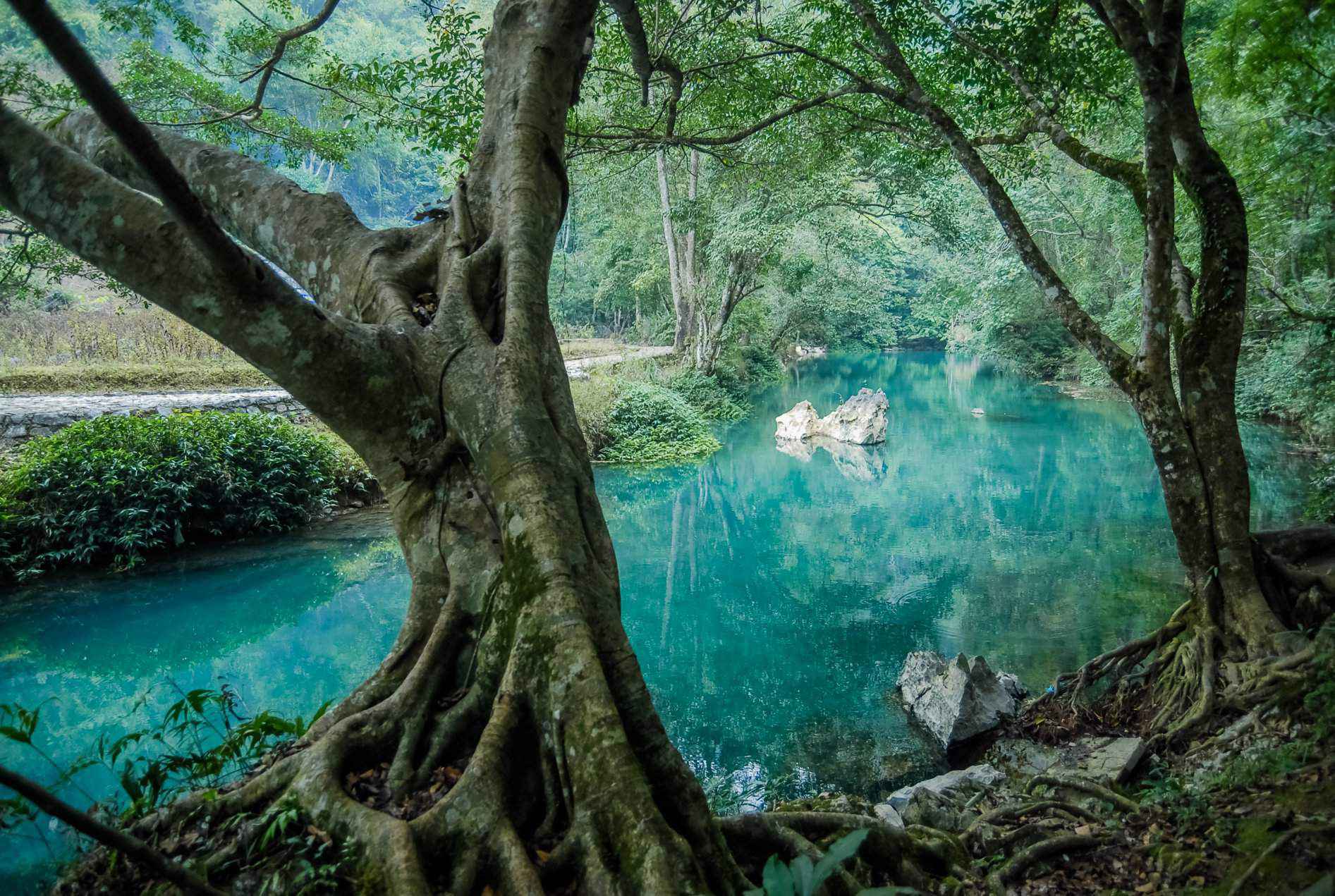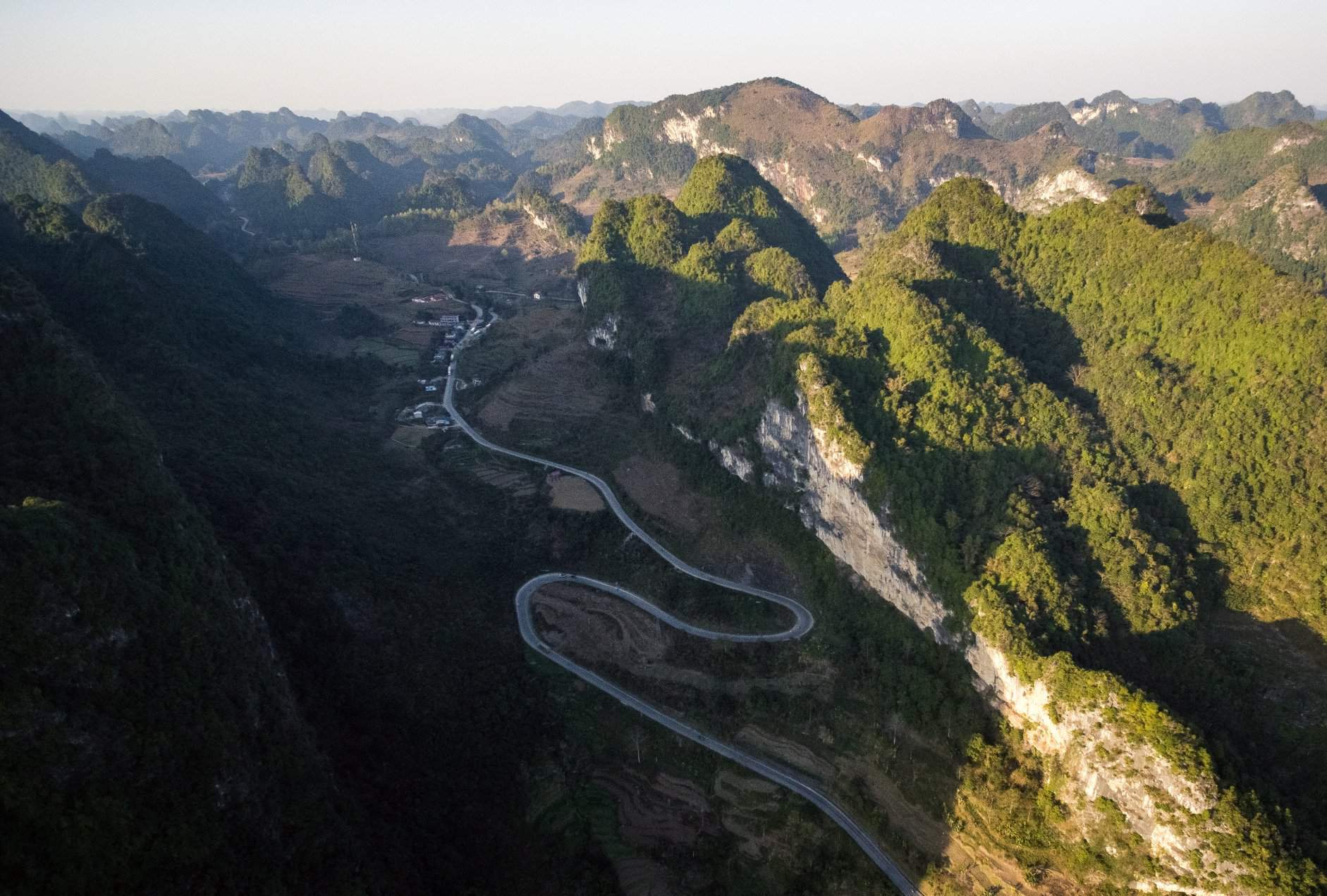Huong Quynh
We discover a fairylike realm with rich geological, cultural and historical values near the country’s northern border
Vietnam boasts a number of famous karst landscapes that have been declared World Heritages by UNESCO, including Ha Long Bay, Phong Nha – Ke Bang National Park, the Trang An Landscape Complex and the Dong Van Stone Plateau. The latter was registered by UNESCO as a Global Geopark.

Cao Bang province is known for its fantastic limestone scenery, biodiversity and interesting geology, as well as its cultural and historical richness. The recognition of the Non Nuoc Cao Bang Geopark in late 2015 brought more attention to this beautiful province. The name Cao Bang refers to a flat plateau (Bằng) in the high mountains (Cao) at the border between Vietnam and China.

Phần lớn Công viên địa chất Non nước Cao Bằng là một vùng đá vôi rộng lớn tới gần 2.000km2, nơi cách đây hàng trăm triệu năm đã từng là đại dương cổ. Diện lộ đá vôi ở Công viên địa chất Non nước Cao Bằng thể hiện rõ rệt nhất một chu trình tiến hóa karst hoàn chỉnh từ sơ khai, non trẻ đến trưởng thành và già. Các khu vực khác của Công viên địa chất Non nước Cao Bằng, bao gồm các đá trầm tích lục nguyên và magma() xâm nhập – núi lửa thể hiện lịch sử tiến hóa địa chất khu vực lâu dài, phức tạp với nhiều gián đoạn trầm tích, nhiều sự kiện tuyệt diệt của sinh giới, lưu giữ nhiều giống loài hóa thạch cổ sinh đặc hữu…
The Vietnamese phrase “Non Nuoc Cao Bang” is used to describe a distant, tranquil and idyllic place. This phrase is said to have been derived from a famous chant: “Please take care of our children/So I may traverse the landscape of Cao Bang”. It dates back to the 16th to the late 17th century when the Mac Dynasty fled Thang Long Citadel for Cao Bang, where it governed a rump state that lasted over 80 years. Here, the Mac Dynasty carried out comprehensive political, economic, cultural, religious and ideological reforms as it had done in the Red River Delta. The zeal for reform drew many idealists to settle in Cao Bang.

Nowadays, despite better roads, reaching Cao Bang still involves navigating tricky bends along mountain roads. Traveling on National Highway 3 from Hanoi, the route to Cao Bang covers nearly 300km and traverses five mountain passes: Giang Pass, Gio Pass, Ngan Son Pass, Cao Bac Pass and Tai Ho Sin Pass. The Non Nuoc Cao Bang Geopark is a vast plateau encircled by high mountains.
Most of the Non Nuoc Cao Bang Geopark is a vast karst region spanning nearly 2,000 square km. Hundreds of millions of years ago this area was covered by ancient oceans. The Geopark contains evidence of the geological evolution from a prehistoric and nascent to mature and ancient karst landscape. Faults dating back hundreds of millions of years played a key role in the geological evolution of the Non Nuoc Cao Bang Geopark. These fault-lines contributed to the formation of the karst landscape and world-class grottos and waterfalls. Many groups of international experts have explored the hundreds of caves and grottos in this area, dubbing the province “The Realm of Caves”.

Cao Bang also boasts cultural treasures of the local Tay people, known for their tính lutes, rich culinary traditions and prehistoric archeological sites. This province is also home to important revolutionary sites, such as Pac Bo, where Ho Chi Minh lived from 1941 to 1945 – considered the “starting point” of the Revolution.
Naure lovers can explore the province’s rich biodiversity; Phia Oac – Phia Den National Park boasts moss forests, dwarf forests and endemic fauna, while Trung Khanh Natural Reserve is home to Cao Vit doucs, one of the world’s 25 most endangered primate species. For more information, please visit www.caobanggeopark.vn.










